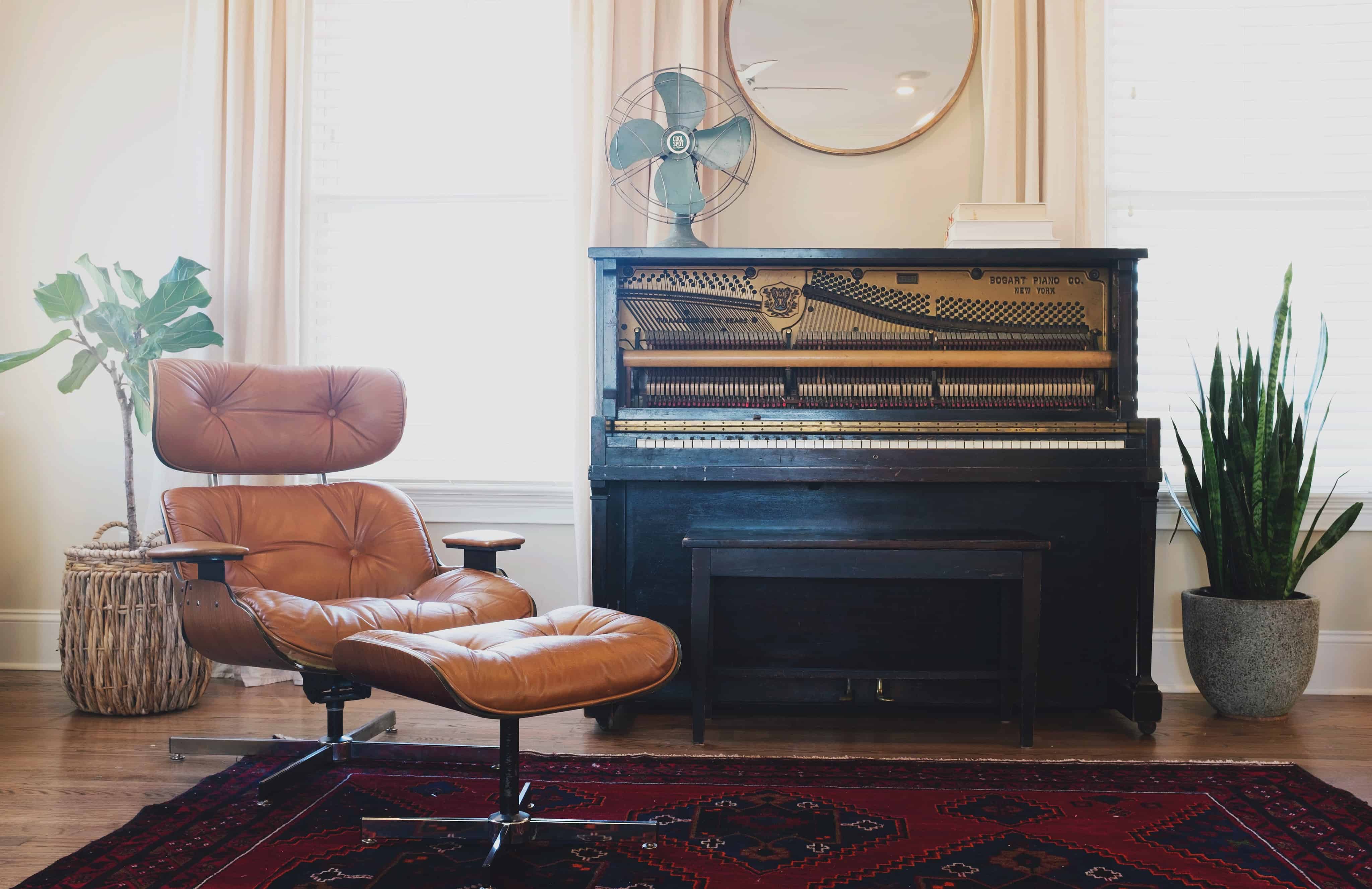Sacramento is known for being a great place for families, but it also has a lot to offer singles as well. The hip and trendy downtown vibe, combined with entertainment and cultural events, make it a great place for single professionals to live and work. With these kinds of draws, it’s no surprise that new real estate is popping up everywhere. Homes like the three level townhouses now being built in East Sacramento are attractive to families and singles alike for their affordability and convenience. But multi-level homes can sometimes present challenges when it comes to cooling.
Why doesn’t the air conditioner cool down the upstairs? The higher up you go in a building, the warmer the rooms are going to get. This is a natural result of heat rising, but can be avoided with the proper design of your heating and cooling systems—and a little extra attention to second and third floors. With some help from local professionals, you can optimize the cooling in your townhome—and lower the heat on your energy bill—so you can enjoy all that Sacramento urban living has to offer.
Reasons Why Your Air Conditioner Isn’t Working Upstairs
If you’ve ever painted a room, you probably remember feeling hotter at the top of a ladder than you did on the ground. It wasn’t your imagination. The air up near your ceiling is definitely warmer than the air near the floor, if only by a degree or two. But this seemingly minor temperature increase, combined with a range of other issues in a home, can make for some pretty uncomfortable rooms on upper floors, typically bedrooms, offices, and family areas. The three common culprits to sweltering top floors are:
- The natural rise of heated air: It’s a thermodynamic principle that hot air will rise in order to try and escape an enclosed space, like your home. It wants to move. When your AC unit starts pumping cool air into your townhouse, warmer air in the space is going to quickly try to make it’s way to the highest point it can find. If that point is the second or third level of your townhome, it can get pretty stuffy up there. If your air conditioner is on the bottom floor of your home, this can exacerbate the problem even more since the length of ductwork extending to the upper floors increases.
- Leaky or unbalanced ducts: Regardless of where your air conditioner is located in your townhouse, if you have a multi-level home, you have a lot of ductwork that snakes through your walls and ceilings to deliver air to every floor. All the ups, downs, and turns mean that it’s incredibly important for the airflow in your ducts to be well balanced so the right amount is pushed into each room.
- A hot roof: In the blazing summer sun, your roof will likely absorb a lot of solar heat. This heat travels through the layers of your roof and right down into your top floor. If this is a bedroom, summer nights can become pretty unbearable.
DIY Ways to Maximize Cooling Upstairs
Everyone is looking for ways to make their home more energy efficient these days, especially in places like Sacramento where the summers can be brutal. Ideally, you could find a way to keep your home cool and comfortable while also keeping your energy bills down. Townhomes have the unique challenge, though, of having multiple floors to condition. But this doesn’t mean they can’t be energy efficient. Below are some DIY strategies you can implement to give your home cooling system a helping hand:
- Adjust bottom floor registers: If you’ve had your ductwork balanced, it’s likely that your HVAC professional also adjusted the vents or registers in each room. But if you want to force more cool air into other rooms of your home, just partially close the vents on the bottom floor, or the rooms that are getting the most air. This will force air back into the ducts, which will go to the rooms on upper floors getting less. This can help you save by reducing the amount of cooling in rooms getting too much air and spreading it to other areas of your home. This gives your air conditioner a break as well because the warmer rooms will be able to satisfy their space temperature more quickly and won’t constantly call for the air conditioner to be turned back on.
- Use ceiling fans: Older homes have relied on ceiling fans for years, and for good reason. They’re a great way to circulate the air in a room throughout your home while using a modest amount of electricity. Fans work by forcing warm air down from the ceiling, which helps that warm air to circulate back into your vents to be conditioned. Well circulated air will allow the temperature to regulate in your home more quickly, putting less stress on your cooling system and lowering your energy bill in the process.
- High efficiency LED lighting: Lighting can really make or break the ambiance in a room, but it can also have a big impact on the temperature. Old school fluorescent lighting puts off a lot of heat and can quickly raise the temperature. Instead of trying to walk around in the dark, though, just replace old light bulbs with high efficiency LED ones. You’ll get the double advantage of using less electricity to power them combined with their low heat radiance. This can make a big difference for your top floors.
- Turn your AC fan to ON instead of AUTO: While your HVAC technician will likely recommend leaving your air conditioner on auto to allow your unit to work more efficiently, in cases where your home has multiple levels it’s sometimes advisable to run your fan in the ON position during regular daytime hours to circulate the air through your home more quickly. This continual circulation of air through your ductwork will mix air more efficiently than if you rely on your unit to decide when to turn the fan on, which is often based on the thermostat located on a lower level of your home.
How to Professionally Cool Down Your Third Floor
I remember playing in my grandmother’s hot attic during the summers when I was a kid and how much cooler the house felt when I came back down. While having a hot attic might not have been a dealbreaker for my grandmother, it certainly is not ideal for homeowners today, especially if you use your top floors as living spaces.
You want every square foot of your home to be livable space, and that means having perfectly even temperatures in every occupied room whether they’re on the top floor or the bottom. An HVAC expert can adjust the cooling system in your townhome to do just that by:
- Insulating the attic: That heat beating down on your rooftop from the sun travels through your ceiling into your attic or upper floor. That’s why it’s important to have plenty of insulation in your attic. This will prevent some of the heat from seeping down into your home and heating your townhouse’s third floor. Ask an insulation professional about how much insulation they recommend for homes with multiple floors.
- Insulating windows: Windows on second and third floors can add a lot of light and character to your home, but they can also let in a lot of heat too. Consider having yours insulated or replaced with sealed, double insulated windows that have special layers to block much of the heat gain that comes in through windows.
- Changing air conditioner filters: It’s always important to change your air conditioner filters on a regular basis, but if you’re having considerable trouble keeping top floors of your home cool, you may need to change them more often. Dirty filters can restrict air flow, making it hard for your air conditioner to push cool air to those top floors.
- Having ducts and registers balanced: Ductwork is designed in different sizes and shapes not just to fit inside your walls, but to create static pressure within them to push cool air along to the furthest parts of your home. Dampers are a type of flat disk inside your ductwork that is moved by an HVAC professional to control the airflow to help create this static pressure. If ducts aren’t designed and then balanced correctly, the air in them will not travel well to the places in your home farthest away from the air conditioner.
Sacramento is a great place to play and live—the latest real estate boom is evidence of that. But with the exciting new development of townhomes in the area comes the question of how to keep all those floors cool during the hot and muggy summers. Multi-level dwellings offer the advantage of space and privacy but can sometimes be a challenge to cool. Townhomes can be just as energy efficient and comfortable as single level homes, though, with a little strategy and know-how.
Eliminating the problem of uneven temperatures from the first floor up is the key to keeping you cooled off and your energy bills low. But if simple strategies don’t solve your cooling issues, a trusted HVAC professional should be consulted to deal with your inefficient air conditioning unit or unbalanced ductwork. A little tweaking to your townhome’s insulation or ducts could go a long way to keeping you and your family comfortable for those long summer days ahead.
If you have a new townhome and are having trouble keeping the top floors cool and comfortable, contact the professionals. Bell Brothers has over 25 years of experience helping Sacramento residents with their AC and ductwork needs.
Photo credit Unsplash user Lauren Mancke


One Response